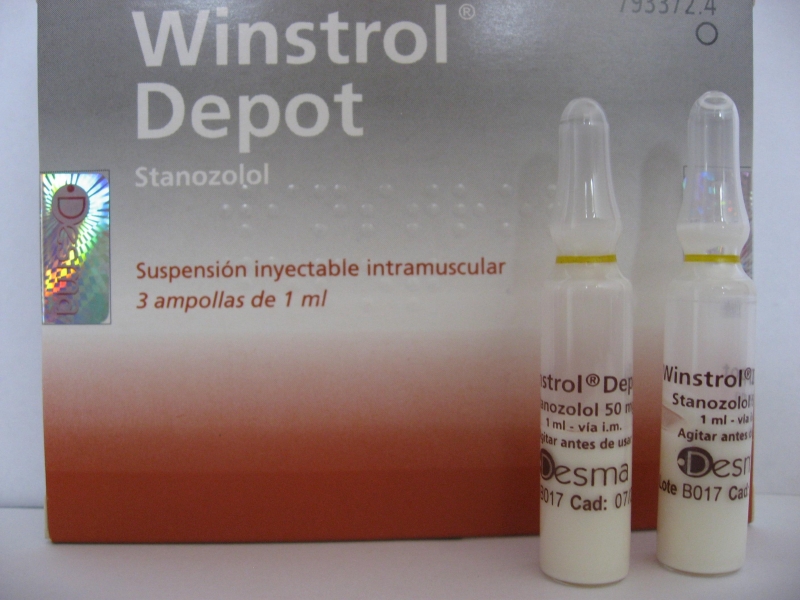
Stimulation of collagen synthesis by the anabolic steroid stanozolol.
Researchers:Falanga V, Greenberg AS, Zhou L, Ochoa SM, Roberts AB, Falabella A, Yamaguchi Y; University of Miami School of Medicine, Department of Dermatology, Miami, Veterans Affairs Medical Center, Florida, USA.
Source:J Invest Dermatol 1998 Dec;111(6):1193-7
Summary:In this report, we measured the effect of the anabolic steroid stanozolol on cell replication and collagen synthesis in cultures of adult human dermal fibroblasts. Stanozolol (0.625-5 micrograms per ml) had no effect on fibroblast replication and cell viability but enhanced collagen synthesis in a dose-dependent manner. Stanozolol also increased (by 2-fold) the mRNA levels of alpha1 (I) and alpha1 (III) procollagen and, to a similar extent, upregulated transforming growth factor-beta1 (TGF-beta1) mRNA and peptide levels. There was no stimulation of collagen synthesis by testosterone. The stimulatory effects of stanozolol on collagen synthesis were blocked by a TGF-beta1 anti-sense oligonucleotide, by antibodies to TGF-beta, and in dermal fibroblast cultures derived from TGF-beta-1 knockout mice. We conclude that collagen synthesis is increased by the anabolic steroid stanozolol and that, for the most part, this effect is due to TGF-beta-1. These findings point to a novel mechanism of action of anabolic steroids.
Discussion:I must first acknowledge that the commonly held belief is that anabolic steroids predispose an athlete to tendon rupture. This conclusion is drawn from animal studies showing that some steroids produce a larger, stiffer tendon in rats and that these steroid-induced tendons “fail” before the tendons from the control animals. The term fail refers to the breaking point.
The interesting thing about the present study is that the steroid stanozolol (Winstrol) had a different effect than testosterone. If you are a regular reader of MESO-Rx you should be well aware that not all steroids act in the same manner. And that because of subtle differences in there molecular structure they are able to elicit different responses. For example, Deca seems to act primarily through the androgen receptor (AR) where as Dianabol has effects beyond those associated with the AR.
Because synthetic steroids have differ in their chemical properties it should not be surprising that testosterone did not have the same effect as Winstrol. Winstrol increased collagen synthesis as opposed to testosterone which did not in this study. Interpreting the results of this study are more difficult than simply describing them. Other researchers have suggested that steroids cause a rapid increase in protein synthesis within tendon fibroblasts which results in fibroids or fibrous nodules within the tendon (Michna,1988). These fibroids alter the mechanical properties of the tendon perhaps predisposing it to rupture. It is also noted that during short term use of steroids there is an alteration in the alignment of collagen fibers which may also lead to rupture. Interestingly these alterations in collagen metabolism are transient with markers of collagen turnover returning more or less to baseline after 3-4 weeks of steroid administration (Karpakka,1992). These same researchers noted that low dose anabolics effect primarily muscle collagenous tissue with tendon being effected only at higher doses (i.e. 5 times the therapeutic dose) which would more closely represent what is needed by bodybuilders to put on mass.
The question remains, dose this mean that Winstrol will actually help prevent tendon injury or will it lead to bigger yet stiffer tendons prone to injury? It is difficult to take animal research and extrapolate the results to humans. Stanozolol is used therapeutically in humans to treat a variety of connective tissue and vascular disorders and its clinical effects suggest that it can modulate connective tissue breakdown in people. Despite being labeled as “ineffective” by many bodybuilders it is very popular among athletes. As with most hormones, dosage plays a role in what effects are seen, be they positive or negative. Hopefully future studies will shed light on the therapeutic effects of different steroids on tendons in humans.

References:
Michna H Appearance and ultrastructure of intranuclear crystalloids in tendon fibroblasts induced by an anabolic steroid hormone in the mouse.Acta Anat (Basel)1988;133(3):247-50
Karpakka JA, Pesola MK, Takala TE. The effects of anabolic steroids on collagen synthesis in rat skeletal muscle and tendon. A preliminary report.Am J Sports Med1992 May-Jun;20(3):262-6
Leave a Reply
You must be logged in to post a comment.